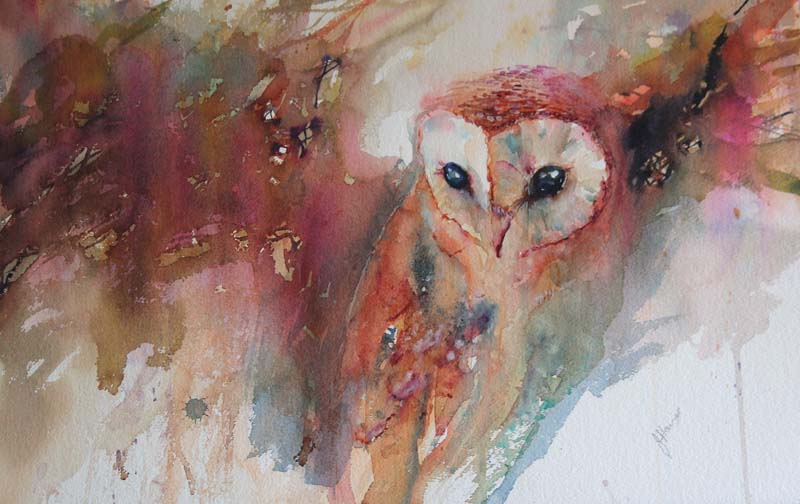
In the composition below, were were using the complimenteries of red violet and yellow green, with the intense colours confined to the main objects and the semi neutrals supporting these colours in the background.
Below is the lighted still life used in class.
Below that is the unlighted SL I used for my example.


Below is the example of the washes we would follow for this demonstration, before we started, it was really important we did a tonal thumbnail ( see top right of the painting ) This was so we could plan the scale and placing of the objects within a given frame, rather than starting to draw on a blank piece of paper either too small or too big, or too close to 1 edge, it also, and very importantly, helps us to plan the tonal range needed in order that our focal point stands out, which in the this case was the sprouty green vegetable which needed to be tonally lighter than the rest of the painting, to stand out from the other objects, and create a light background to enable the right hand onion to stand out more.

Below is a simple exercise which demonstrates how to create a focal point using contrast, in this example the contrast is created by the triangle being the lightest object in the painting next to the darkest object, note that the circle is very similar in tone to the background and is grabbing less of your attention by being less contrasting, the square has more 'pull' than the circle by having a gradated opposite.

Here is a simple still life of light out of dark, and there is no doubt about it's focal point
The focal point in this painting is the fruit, however the artist also wants you to rest your eyes on the reflection on the jar, and light shining on the cloth, in this way, you are encouraged to move your eye around the composition.
Another aspect of composition we were studying today was harmony, this is where you have a repetition of similar shapes, colours, texture, lines and direction, however, you still need contrast to keep the painting from looking too similar
Below is a painting which has attempted to have harmony in colour without any variations in the similarity of colour as a result it is boring and lifeless.
Below are some successful still lifes, have a look and be aware of where your eye is moving over the picture, what is it most drawn to and why, is there a focal point? or more than one?
Think about the different ways the artist has created contrast to attract your eye, and think about the artists choice of colour, use the colour wheel to figure out what their colour choices were.
Newt week we will continue with your still life, however, I said we'd be working from photographs as the sprouty green veg will have wilted by then, but on reflection, we haven't drawn much detail on that yet, so I'll get another one, and use the onions and beetroot which won't have perished then, when we add detail for still life, we'll be making compositional choices as we can refine where our focal point will be, I will email the photo's of the still life for those to paint up who were unable to come this week.





















































